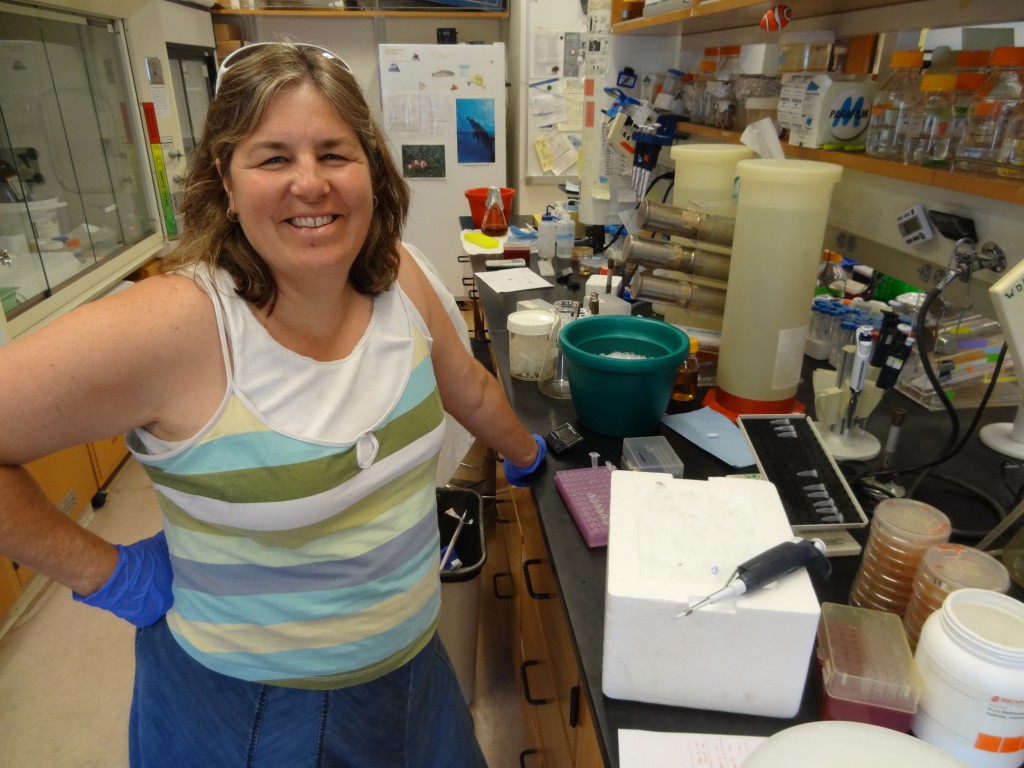 E-mail: clfasching@ucdavis.edu
E-mail: clfasching@ucdavis.edu
Project
Role of Sgs1 in homologous recombination: Dissolution of branched DNA substrates
Education
Colorado State University, Ft. Collins, CO (August 1981-May 1985) B.S. in Biological Sciences, Minor in German.
California State University, Long Beach, CA (August 1994- August 1998) M.S. The role of cysteine residues in the nuclear transport of SV40 Vp1.
University of Sydney, Sydney, NSW Australia (August 2001; October 2006) Ph.D. Molecular mechanisms of Alternative Lengthening of Telomeres.
Teaching Experience:
Supervised students for the practical portion of Univ of Sydney ANAT3002 cell and developmental biology course, 2001, 2002 and 2004
Mentored a German Diplomarbeit student (Univ of Witten), Jan 2002-Oct 2002
Mentored a Univ of Sydney summer student, Nov 2005–Jan 2006
Mentored a Univ of Sydney mid-term student, July 2006
Research Experience:
August 2007 – Present: University of California, Davis Postdoctoral Fellow, Homologous recombination: Rec Q helicases
February 1999- August 2001: Children’s Medical Research Institute, Sydney, Australia Senior Research Officer, Telomere-telomere recombination in Alternative lengthening of telomeres
October 1993-January 1994: Deutsches Krebforschungszentrum, Heidelberg, Germany Visiting Cytogeneticist, Tumor suppression via microcell-mediated chromosome transfer
February 1992-September 1997: University of California, Irvine; Laboratory Manager
April 1988-September 1997: University of California, Irvine; Cytogeneticist/Staff Research Associate II Tumor suppression via microcell-mediated chromosome transfer
June 1986-April 1988: Reproductive Genetics Center, P.C. Denver, Colorado Cytogeneticist, Pre-natal diagnosis
Publications
Dowdy SF, DJ Scanlon, CL Fasching, G Casey and EJ Stanbridge. 1990. Irradiation microcell-mediated chromosome transfer (XMMCT): the generation of specific chromosomal deletions. Genes, Chromosomes and Cancer. 2:318-327.
Bader SF, CL Fasching, GM Brodeur and EJ Stanbridge. 1991. Dissociation of suppression of tumorigenicity and differentiation in vitro by transfer of single human chromosomes into human neuroblastoma cells. Cell Growth and Differentiation. 2:245-255.
Dowdy SF, CL Fasching, DJ Scanlon, D Araujo, E Livanos, K-M Lai, BE Weissman and EJ Stanbridge. 1991. Suppression of tumorigenicity in Wilm’s tumor by the p14:p15 region of chromosome 11. Science. 254:293-295.
Goyette MC, K Cho, CL Fasching, DB Levy, KW Kinzler, C Paraskeva, B Vogelstein and EJ Stanbridge. 1992. Colorectal cancer progression is associated with multiple tumor suppressor gene defects, but reversion to the nontumorigenic state is accomplished by correction of any single defect via chromosome transfer. Mol. Cell Bio. 12:1387-1289.
Casey G, S Plummer, G Hoeltge, D Scanlon, C Fasching and EJ Stanbridge. 1993. Evidence for a novel breast cancer growth suppressor gene on chromosome 17. Human Molec. Genetics. 2:1921-1927.
Sato KY, PG Polakis, H Haubruck, CL Fasching, F McCormick and EJ Stanbridge. 1994. Analysis of the tumor suppressor activity of the Krev-1 gene in human tumor cell lines. Cancer Res. 54:552-559.
Anderson MJ, CL Fasching, H-J Xu, WF Benedict and EJ Stanbridge. 1994. Chromosome 13 transfer provides evidence of autoregulation of RB1 protein expression. Genes, Chromosomes and Cancer. 9:251-260.
Anderson MJ, G Casey, CL Fasching and EJ Stanbridge. 1994. Evidence that wild type p53, and not genes in either chromosomes 1 or 11, controls the tumorigenic phenotype of the human fibrosarcoma HT1080. Genes, Chromosomes and Cancer. 9:266-281.
Mendonca MS, CL Fasching, ES Srivatsan, EJ Stanbridge and JL Redpath. 1995. Loss of a putative tumor suppressor locus after gamma ray-induced neoplastic transformation of HeLa x Fibroblast human cell hybrids. Radiation Res. 143:34-44.
Boukamp P, W Peter, U Pascheberg, S Altmeier, C Fasching, EJ Stanbridge, NE Fusenig. 1995. Step-wise progression in human skin carcinogenesis in vitro involves mutational inactivation of p53, rasH oncogene activation and additional chromosome loss. Oncogene. 11:961-9.
Plattner R, MJ Anderson, KY Sato, CL Fasching, CJ Der and Stanbridge EJ. 1996. Loss of oncogenic ras expression does not correlate with loss of tumorigenicity in human cells. Proc Natl Acad Sci U S A. 93:6665-70.
Boukamp P, S Popp, S Altmeyer, A Hulsen, C Fasching, T Cremer and NE Fusenig. 1997. Sustained nontumorigenic phenotype correlates with a largely stable chromosome content during long-term culture of the human keratinocyte line HaCaT. Genes Chromosomes Cancer. 19:201-14.
Mendonca MS, K Howard, CL Fasching, DL Farrington, LA Desmond, EJ Stanbridge and JL Redpath. 1998. Loss of suppressor loci on chromosomes 11 and 14 may be required for radiation-induced neoplastic transformation of HeLa x skin fibroblast human cell hybrids. Radiation Res. 149:246-55.
Dunham, M.A., Neumann, A.A., Fasching, C.L., Reddel, R.R. 2000 Telomere maintenance by recombination in human cells. Nature Genetics. 26:447-450
Neumann A, Fasching C. 2001 Pictures in Molecular Medicine: Telomeres copying telomeres in human cells. Trends Mol Med. 7:184.
Gharakhanian E, Fasching CL, Orlando SJ, Perez AR. 2001 Cys(9), Cys(104) and Cys(207) of simian virus 40 Vp1 are essential for infectious virion formation in CV-1 cells. J Gen Virol. 82:1935-1939.
Fasching C.L. and Reddel R.R. 2002 Telomere maintenance in human cell lines and tumors without telomerase, in Telomerases, Telomeres and Cancer. Landes Bioscience/Eurekah.com and Kluwer Academic/Plenum Publishers 359-373.
Fasching CL, Bower K, Reddel RR. 2005 Telomerase-independent telomere length maintenance in the absence of alternative lengthening of telomere-associated promyelocytic leukemia bodies. Cancer Res. 65:2722-2729.
Fasching CL, Neumann AA, Muntoni A, Yeager, TR and Reddel RR. 2007. DNA Damage Induces Alternative Lengthening of Telomeres (ALT)-Associated Promyelocytic Leukemia Bodies that Preferentially Associate with Linear Telomeric DNA. Cancer Res. 15:7072